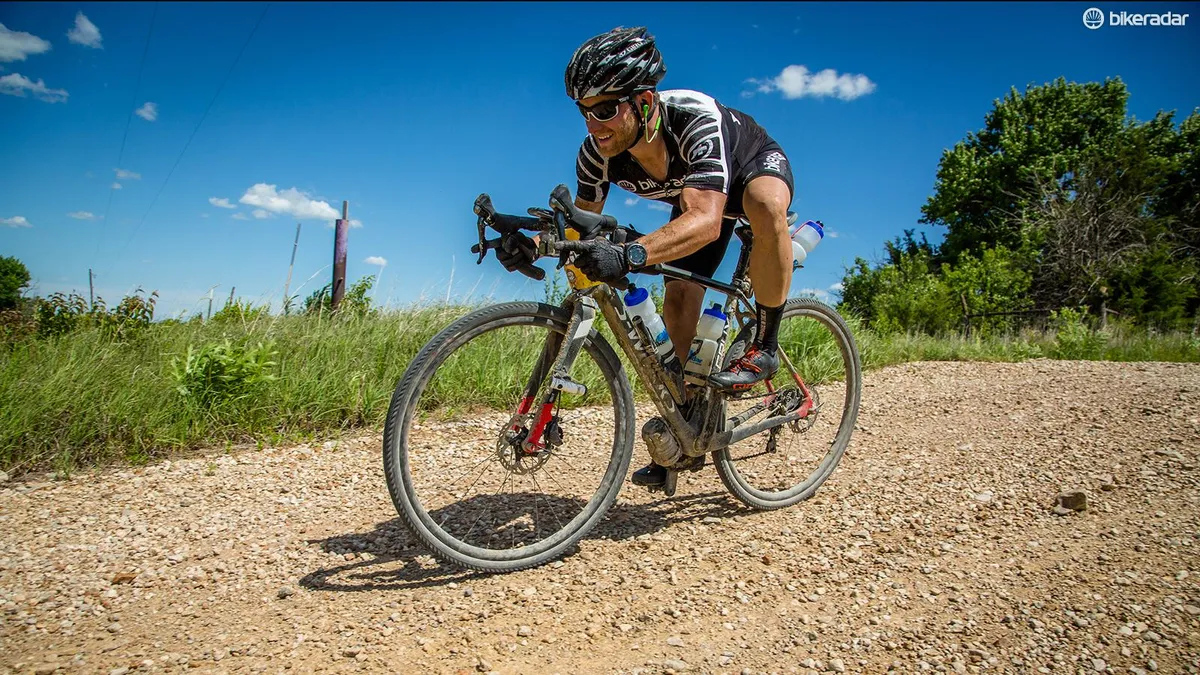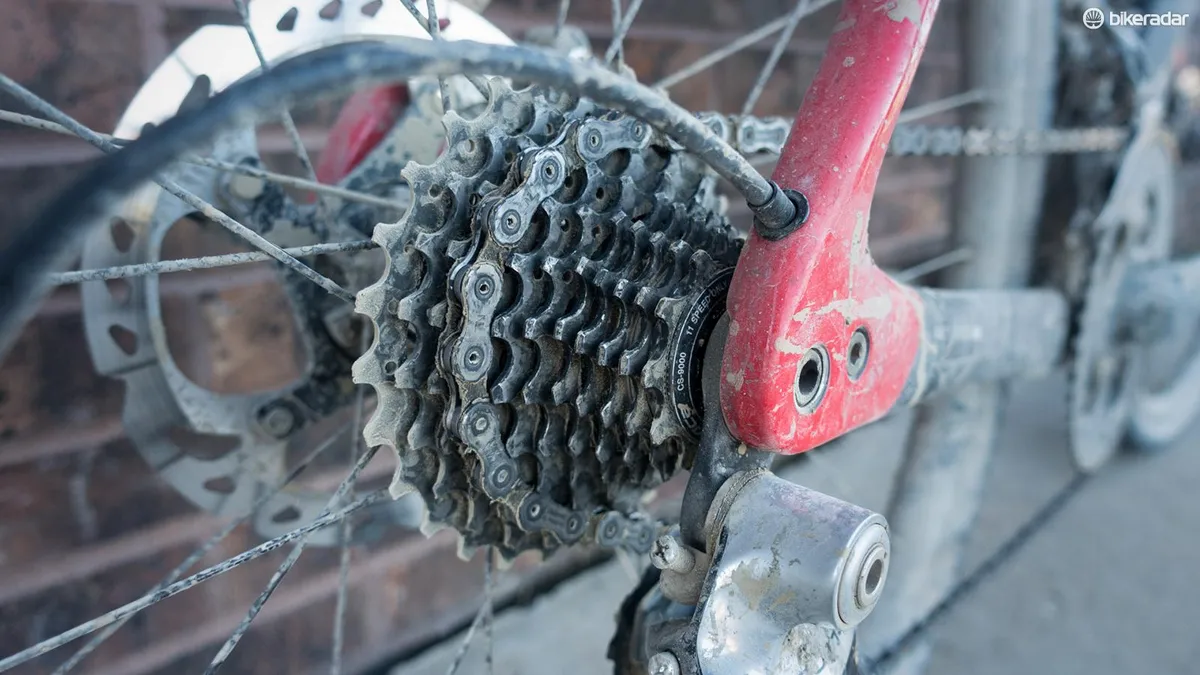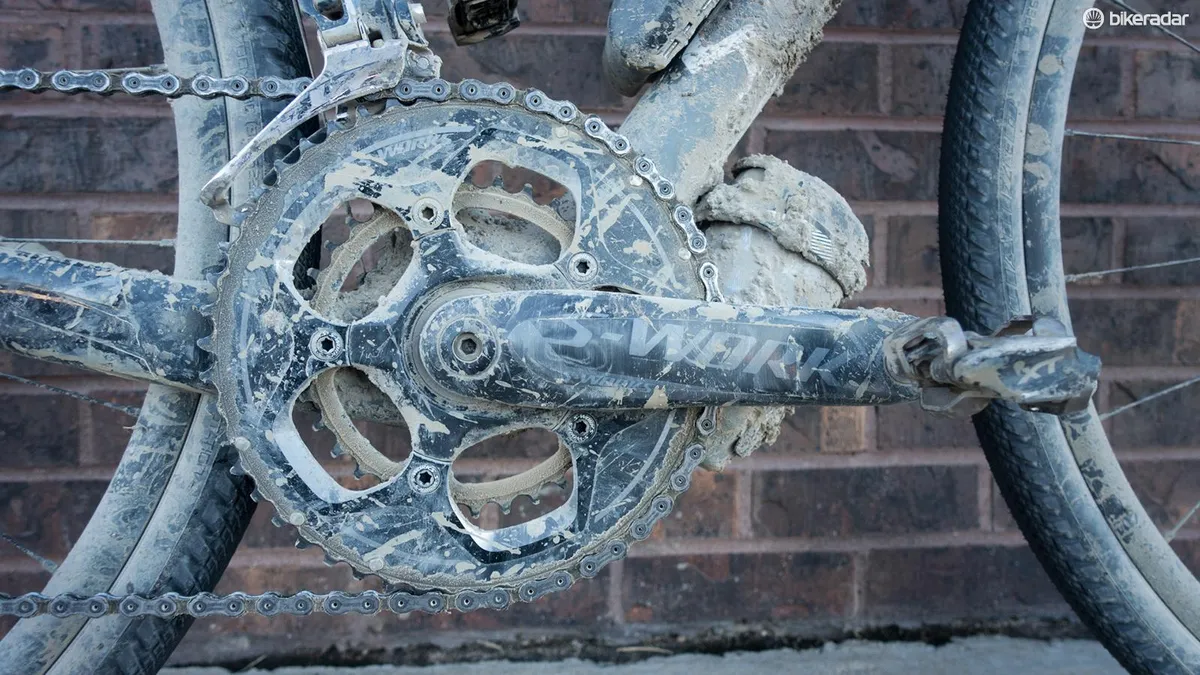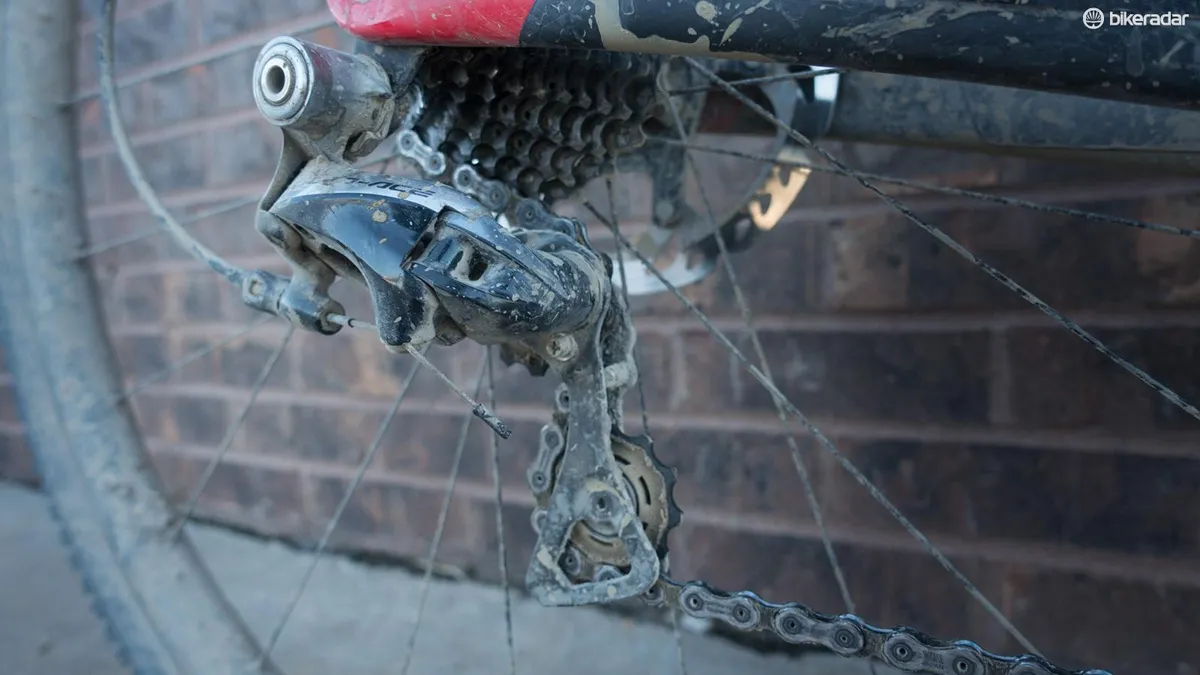The Dirty Kanza 200 has become the crown jewel of gravel racing, drawing nearly 1,000 racers who test their mettle against 206 miles of rough and rocky Kansas gravel roads. I built up a Specialized CruX to see me through 14 hours and 23 minutes of gravel racing through heat and headwinds.
- Horse for the Course: Moots Routt 45 for the Dirty Kanza 200
- Horse for the Course: Raleigh Roker Race for the Dirty Reiver
- The course: The Dirty Kanza 200, a 200+ mile gravel race through the Flint Hills of central Kansas
- The equipment goal: A race-ready gravel bike that balances performance, reliability and comfort
- The horse: A Specialized S-Works CruX with a gravel-centric build including a 50/34t compact crankset, 700x38 tubeless tires and lots of water bottles
null
A long and rocky relationship
This wasn’t my first attempt at the Dirty Kanza 200. Far from it, in fact. I toed the start line at the inaugural event back in 2006, when race participants numbered in the dozens. Since year one, I’ve had two more finishes and three spectacular failures. Equipment, nutrition, hydration — you name it, I’ve probably screwed it up at this race.
I took those hard-earned lessons and used them to refine what I think is the most capable set-up for this particular gravel race. The sixth time was the charm for me. This was the first year I felt like I cracked the recipe for success at the Kanza.
More than just a cyclocross bike
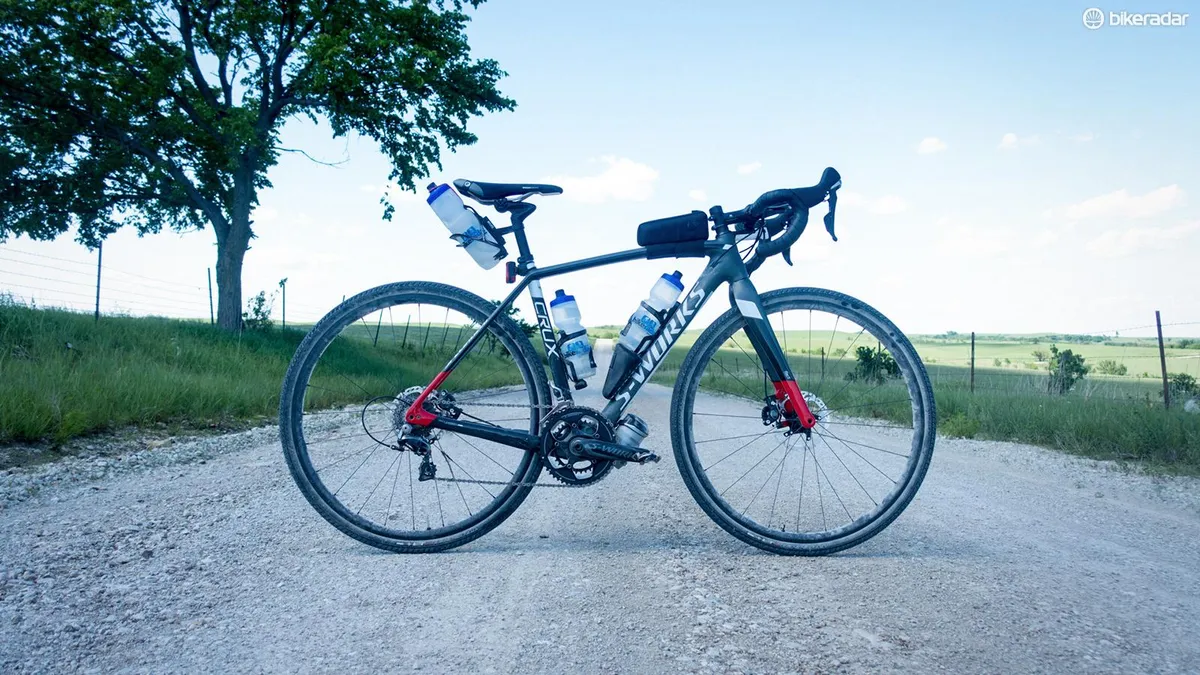
The first piece of this gravel puzzle was the frameset. Some folks deride the term “gravel” as a descriptor of a breed of bicycle. I know better. Growing up in the Flint Hills of Kansas, I’ve spent many hours riding the rocky, rolling hills and understand that the Dirty Kanza places unique demands on the bike and rider.
While there are an increasing number of gravel bikes on the market, few check all the boxes I was seeking for this event: lightweight, clearance for wide tires and nimble handling. Many gravel/all-road/adventure bikes tick the first two boxes, but not necessarily the third.
While I wasn’t in contention for the win, it’s nice to know that when piloted by a fitter rider, the CruX can deliver
This is still a race after all and while stability is nice, once fatigue sits in the ability to quickly change direction to avoid obstacles such as axle-deep ruts, dropped water bottles, and crashing riders is equally important.
It’s still a growing category, but I feel there’s a clear distinction between an all-around gravel bike suitable for recreational riding and bikepacking, and a purpose-built gravel race bike.
Just as there’s a difference between a traditional road race bike and an endurance road bike, or between a cross-country and trail bike on the mountain bike side of things, gravel racing has its own set of needs. It seems some companies are tapping into this: Salsa has the Warbird, Open offers the UP and 3T has Exploro.
The aforementioned bikes are all good candidates for this event, but I went a slightly different route and selected a cyclocross bike.
Many cyclocross bikes have the geometry and handling I was after — a low bottom bracket, a somewhat relaxed head tube angle and chainstays short enough to keep the handling snappy, but the Specialized CruX has a gravel race pedigree that sets it apart from the crowd.
While I wasn’t in contention for the win, it’s nice to know that when piloted by a fitter rider, the CruX can deliver. It carried former race champions Dan Hughes and Rebecca Rusch swiftly to the finish line several times.
In fact, feedback from Hughes was instrumental in developing the “EVO” versions of the CruX, which were designed with gravel racing in mind. These variants feature road compact gearing and wider tires than the standard cyclocross-focused models. Gravel racing is also the reason there’s a third set of water bottle bosses underneath the down tube of the CruX.
Gravel-ready gear
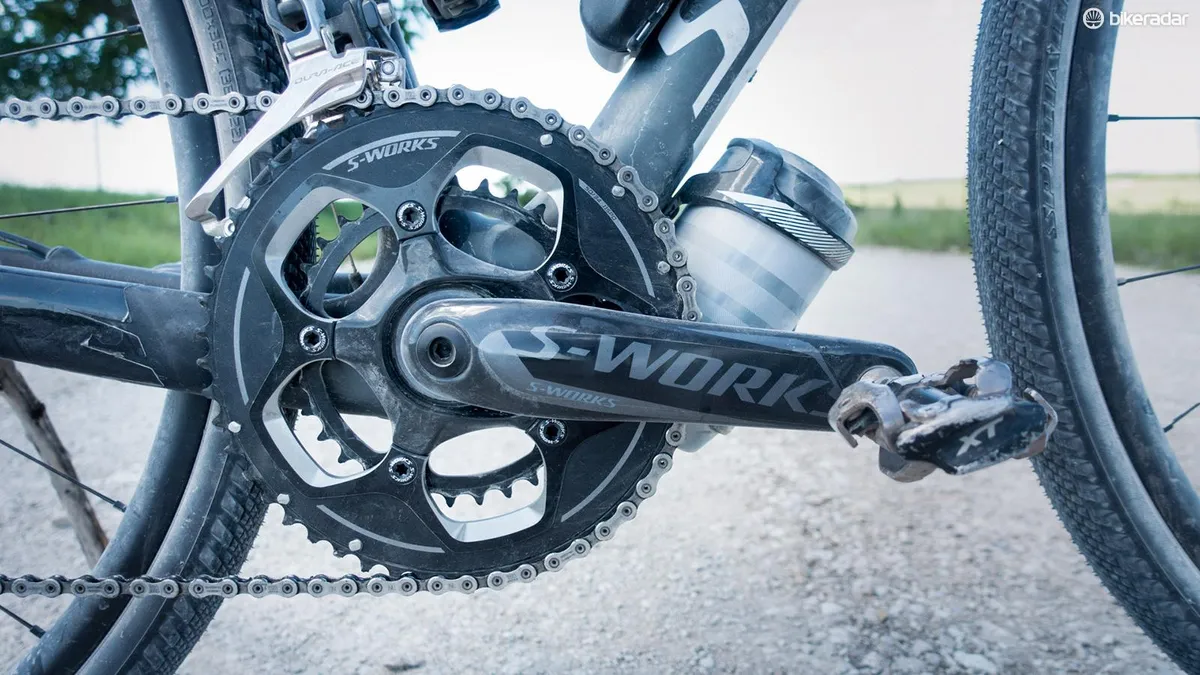
Specialized supplied the S-Works version of the CruX with some adjustments that made it perfectly suited to this event.
The stock 46/36t chainrings were swapped out for a road compact with 50/34t gearing. I kept the stock 11-28t cassette and was never left wanting for gearing.
Tire choice can make or break a rider’s day at the Dirty Kanza. Flint is incredibly sharp — it’s what the region’s first inhabitants used to fashion their arrowheads out of — so tough casings are essential and tubeless-compatibility is preferred.
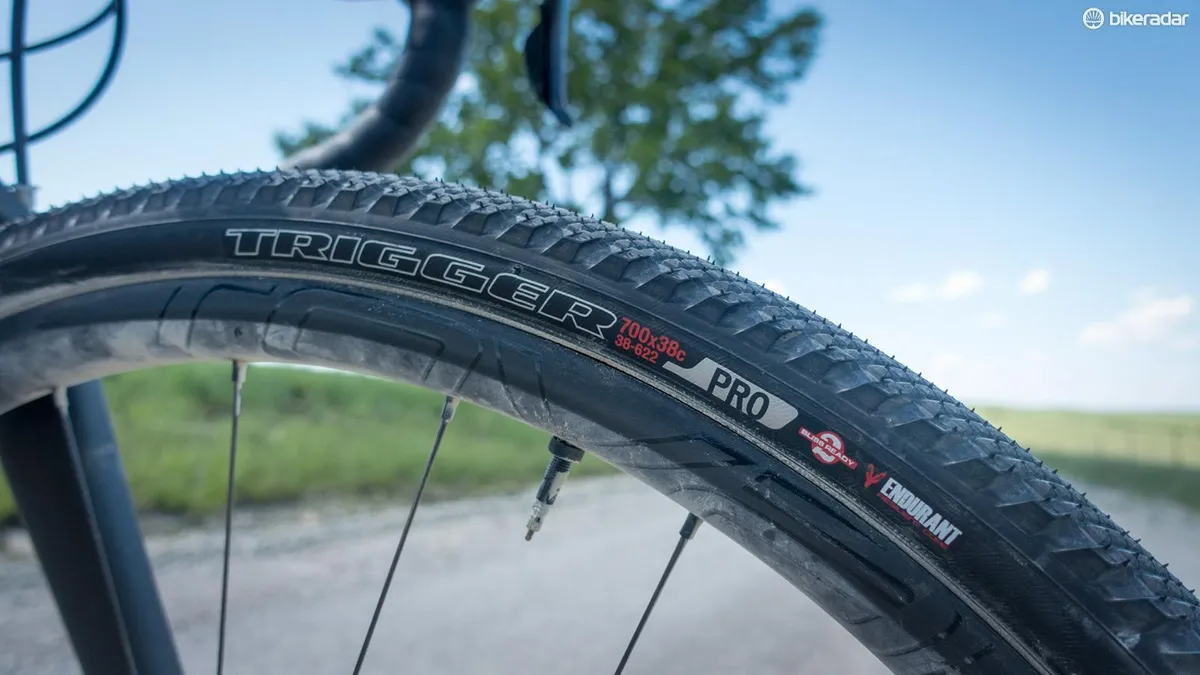
Specialized’s Trigger Pro tire has a reinforced casing and is easy to set up tubeless. I used the 700x38 version of this tire and could not have been happier with the performance. The casing is durable without being too stiff and the low profile tread gives a bit of grip without adding much rolling resistance. The wide Roval Control SCS carbon rims gave these tires a nice plump profile.
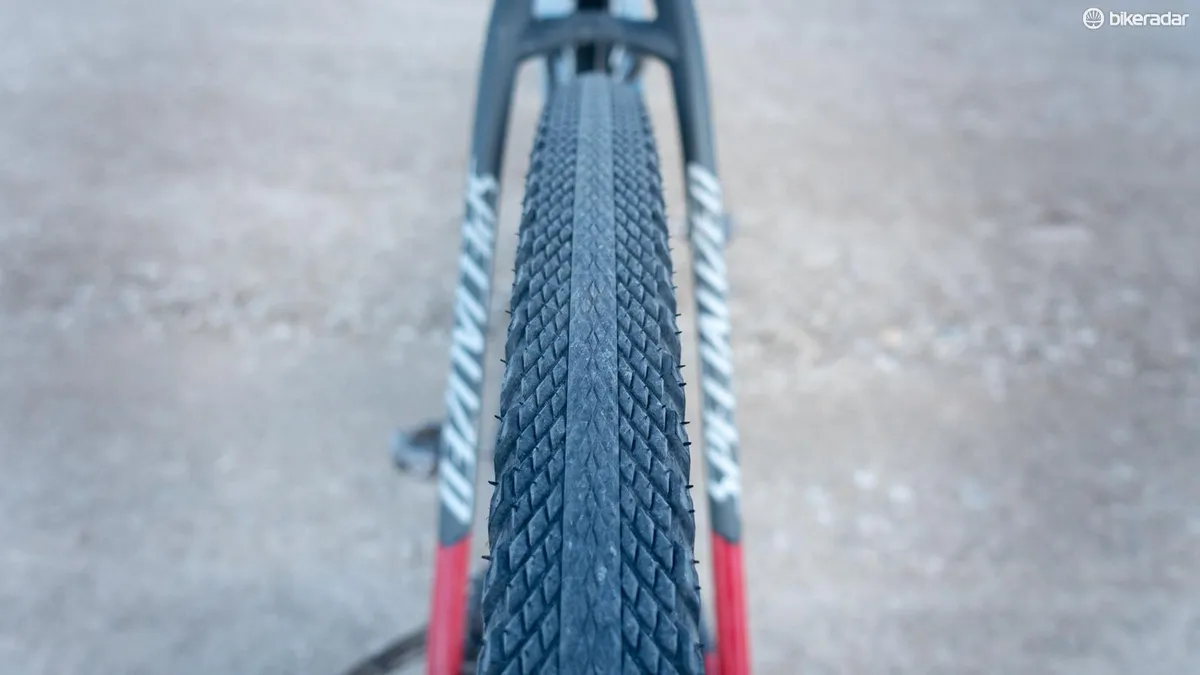
Pinch flatting is always a risk at this race, so I ran slightly higher than normal (for me) tire pressures — 38psi upfront and 40psi in the back.
As for sealant, I used Stan’s NoTubes new Race Sealant. It’s based on Stan’s original formula with larger particles that make it more effective at clogging and sealing large punctures and tears.
Thankfully, I didn’t need to test it. The Trigger Pros rolled across 200 miles of rugged Kansas gravel unscathed.
Creature comforts
Even in the best conditions, this race takes a significant toll on racers’ bodies. Over the years, I’ve learned that whatever modifications I can make to increase comfort also makes me faster.
Specialized’s flexing CG-R seatpost comes standard on the CruX, so that was one component not to worry about. I also double-wrapped the handlebar to reduce hand fatigue.
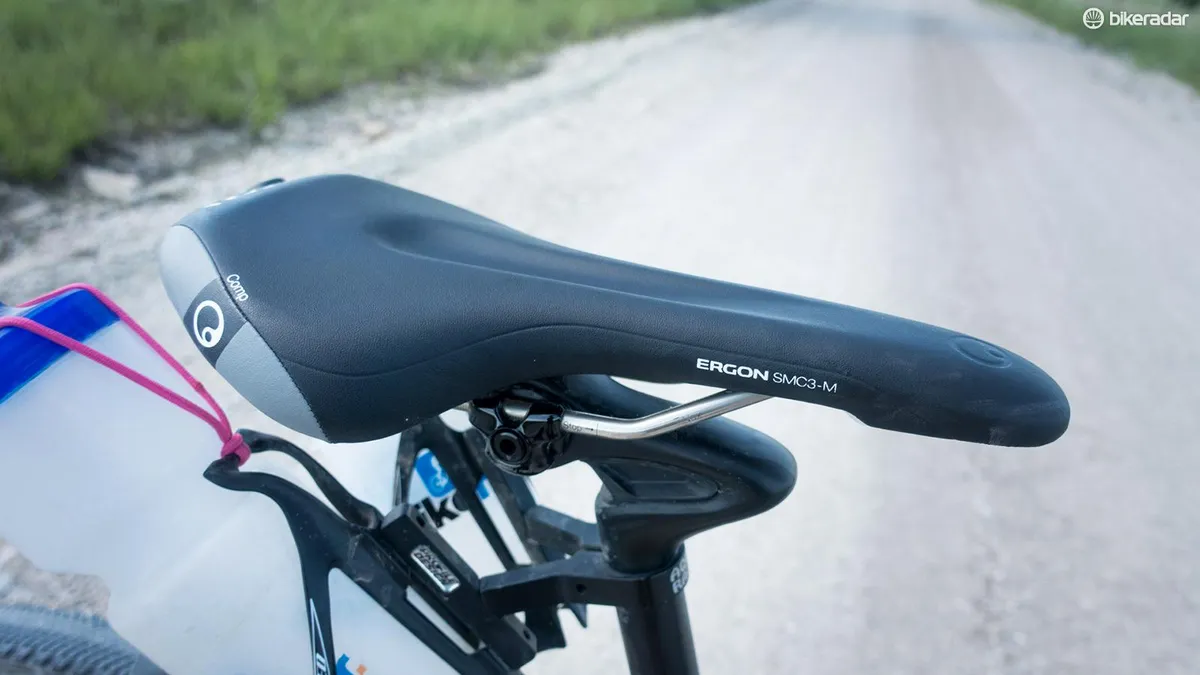
I traded the stock Specialized Phenom saddle for Ergon’s SMC3 Comp. This model is designed for endurance cross-country racing, which seemed close enough to what I was doing.
Installing the SMC3 was the single best decision I made in advance of the Dirty Kanza 200. I had zero issues with soreness or numbness. Comfort is a often a relative term in endurance racing, but in this case, I spent the entire day feeling as if angels wearing marshmallow mittens carried my butt to the finish line.
Food and water. So much water…

The Dirty Kanza allows riders to resupply from their support crews at three designated checkpoints along the route. These stops are generally spaced roughly 50 miles apart.
Novice racers sometimes feel the urge to go ultra light, carrying just enough food and nutrition to get them to the next aid station. The problem with this is that water bottles get ejected, the mercury climbs and your pace drops. So while you might be fine doing your normal 50 mile Sunday ride with just two bottles, you will quickly find yourself in dire straights at the Kanza. The first leg is spent hydrating for the second and so on, so I planned accordingly. I needed all four bottles to get me through each segment.
I kept my food in my jersey pockets and in Speedsleev’s Endure Top Tube Case
In the past I’ve used hydration packs or tucked a 3-liter bladder into a frame pack. I’ve found that for events this long, packs hurt my back and chafe my shoulders, so that was out.
Frame packs work well, but it’s quicker to just swap bottles at checkpoints. With that in mind, I dug out an old Profile Designs Aqua Rack from the depths of my parts bin. This thing didn’t work well when it was new, but with some modifications it was perfect.
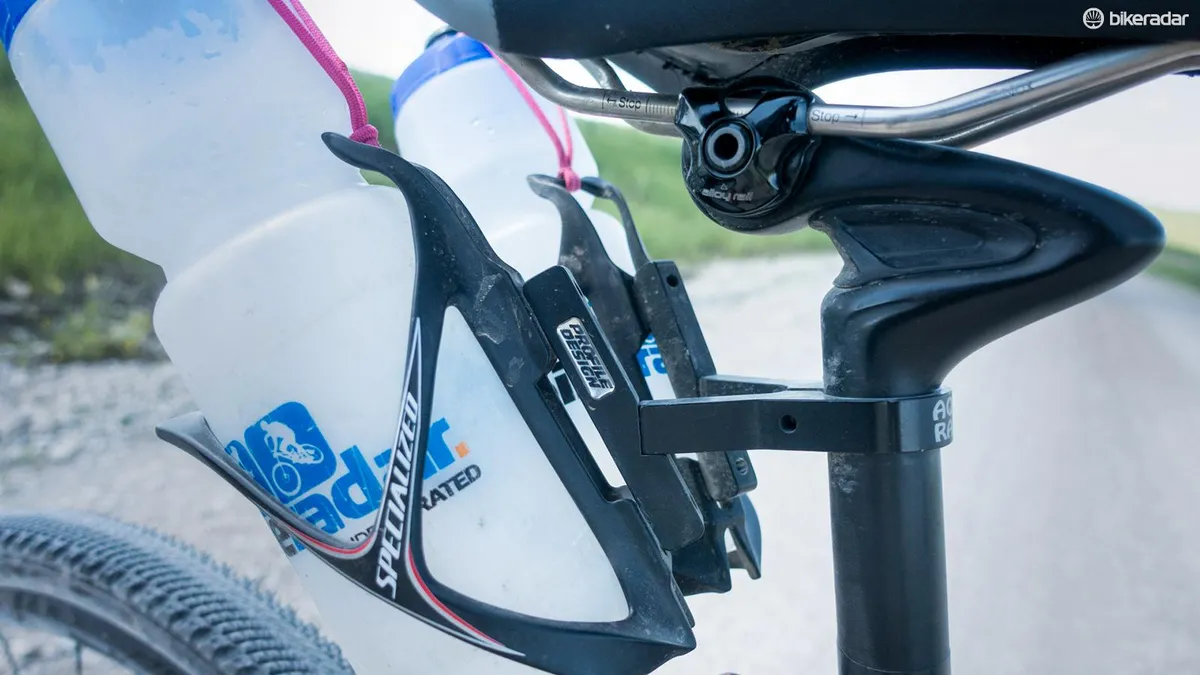
First, I removed the Profile Designs water bottle cages, which popped more bottles than a rap mogul in a nightclub, and threw them in the trash. I replaced them with two Specialized Rib Cages. The final modification was to loop two of my wife’s pink hair ties through the cages and over the bottles to ensure they wouldn’t become bottle rockets.
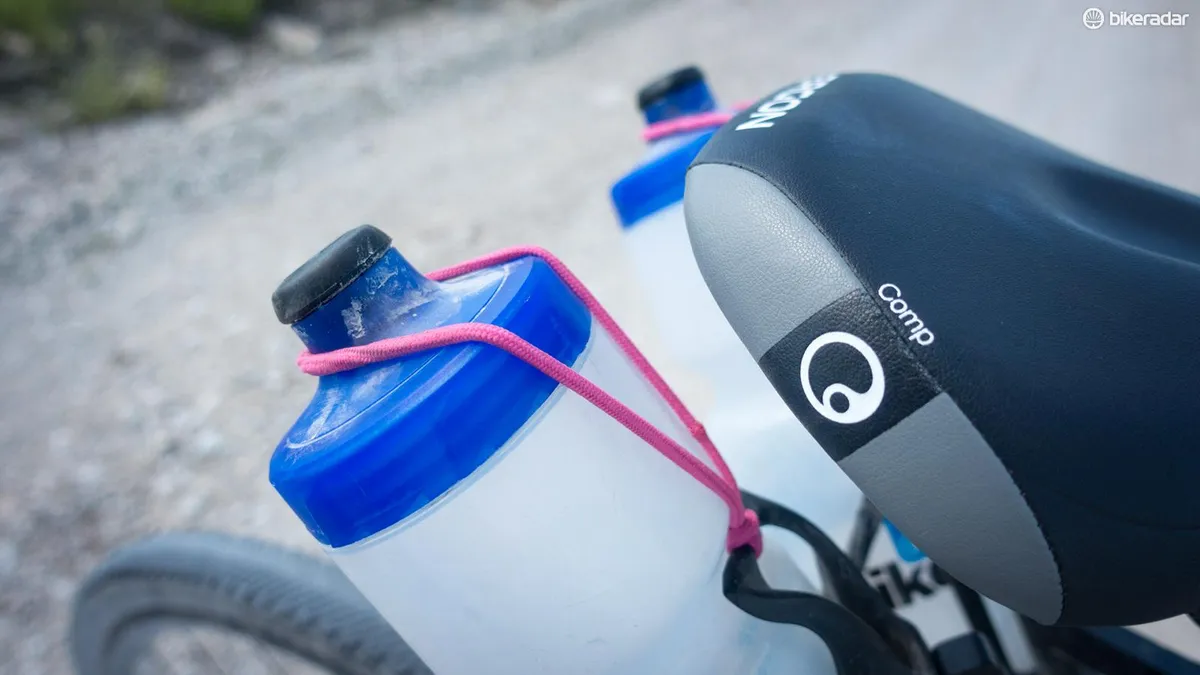
I tested this setup without the hair ties on some rugged singletrack and everything worked well, but I kept them in place as a courtesy to fellow racers — there’s no reason to ruin someone else’s race because you don’t have your gear dialed.
I used a Skratch hydration mix in the bottles. I kept my food in my jersey pockets and in Speedsleev’s Endure Top Tube Case. This is the least intrusive top tube bag I’ve found. It’s designed so that it doesn’t need a strap to wrap around the steerer to keep it in place. It fits four energy bars and a back-up battery for my GPS.
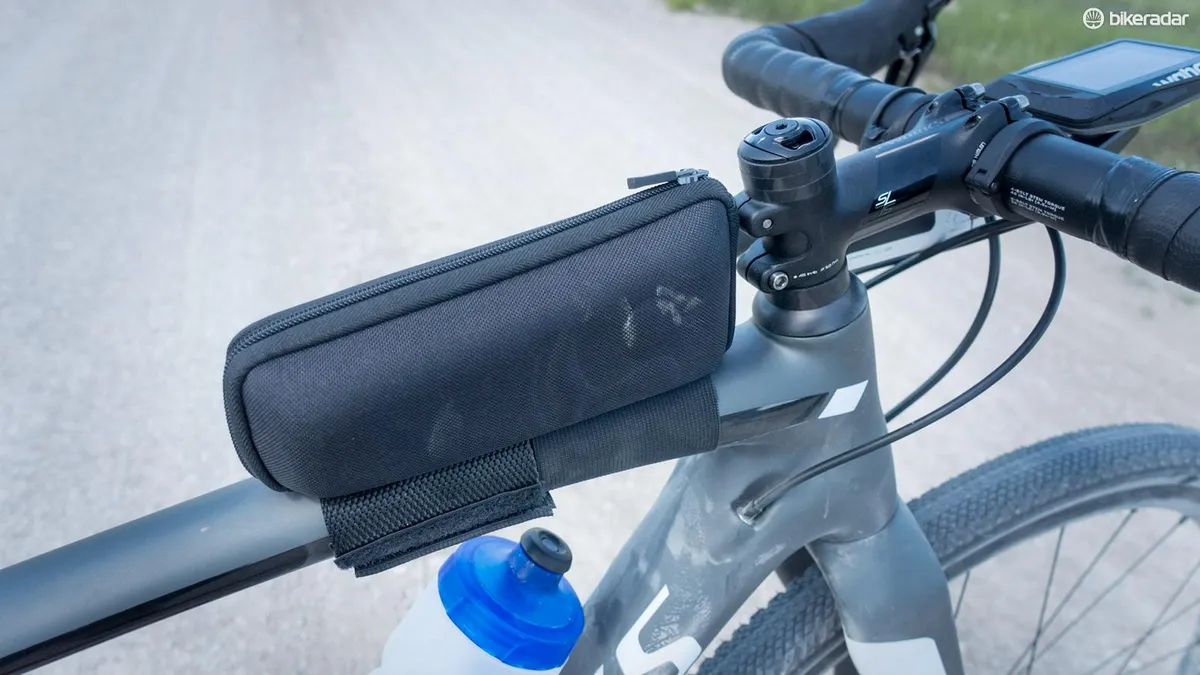
Other essentials
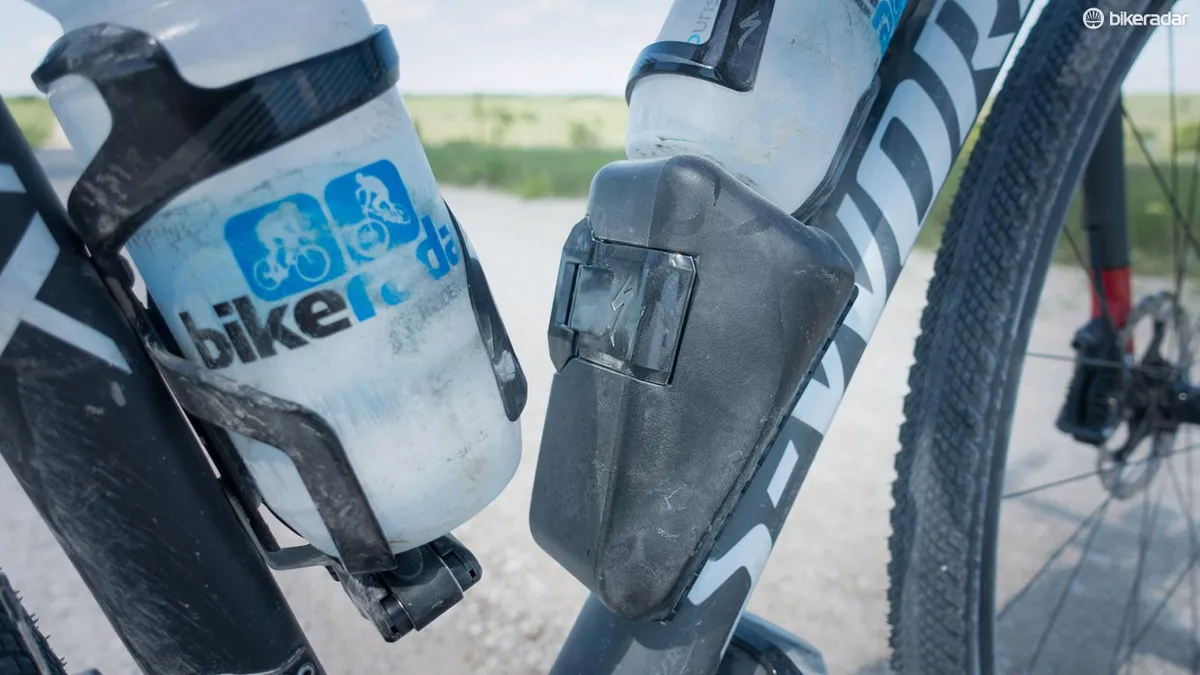
The CruX has a third bottle mount on the underside of the down tube, but it’s hard to reach while riding and the course takes riders through miles of open rangeland — meaning you’re going to be riding through a lot of cow poop.
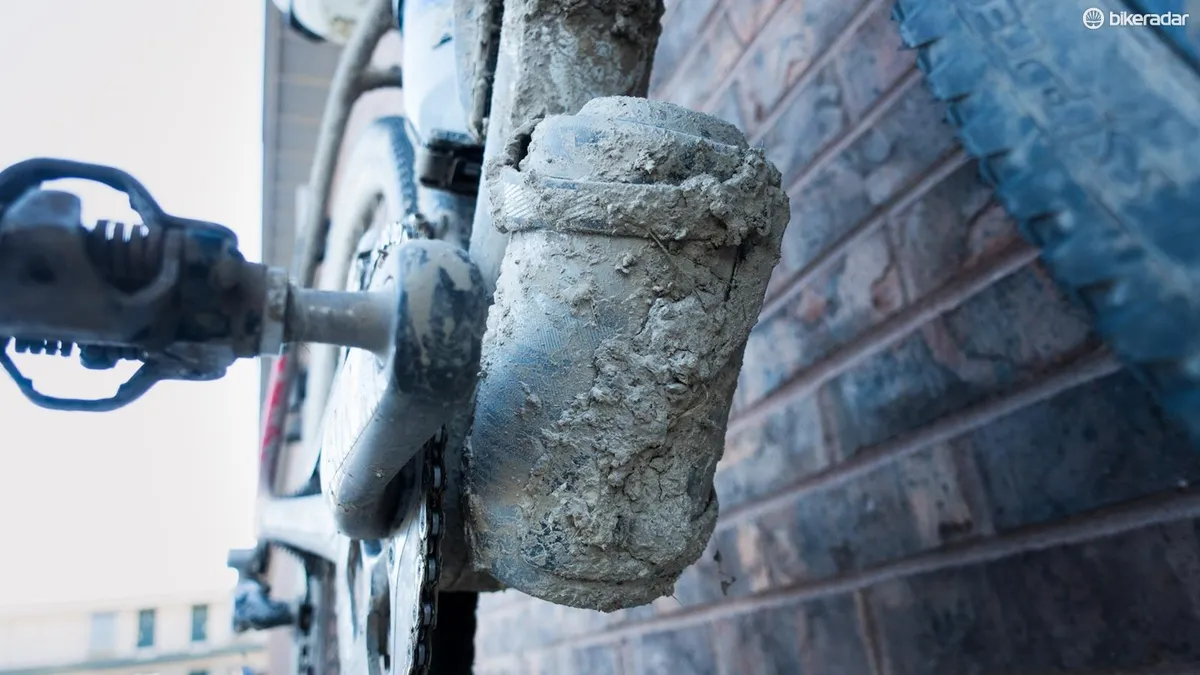
Instead of sucking down manure, I opted to store additional repair items in a Keg. The SWAT box held a spare tube, CO2 cartridge and inflator. I put another tube, CO2 cartridge, patch kit, valve stem tool, three zip-ties, multi-tool and a spare derailleur hanger in the Keg.
In addition to the CO2 inflator I carried Silca’s Pocket Impero pump. My only criticism of this pump is that it doesn’t come with a frame-mounting bracket. Thankfully, I had a bracket from a defunct pump that worked well enough.
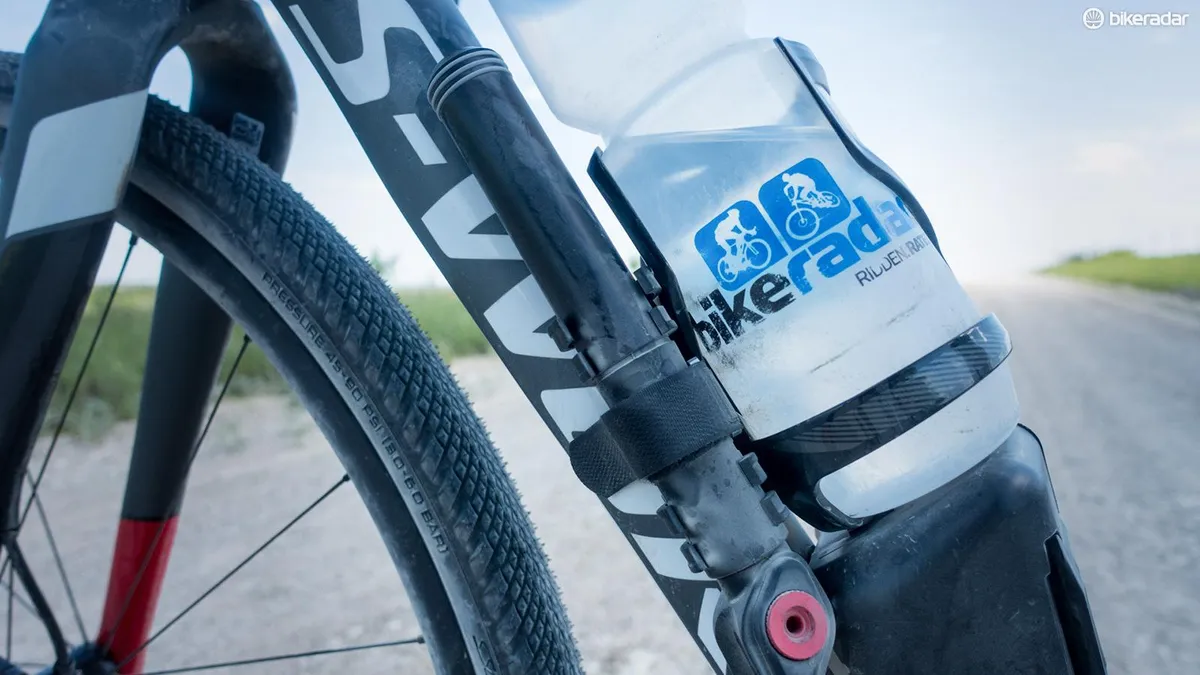
All Dirty Kanza riders are required to have front and rear lights. The race starts at 6am, but many riders won’t cross the finish line until late into the night, or early the next morning. My goal was to beat the sun, so I ran the small but powerful Bontrager Ion 700 front light and the Bontrager Flare R rear light.
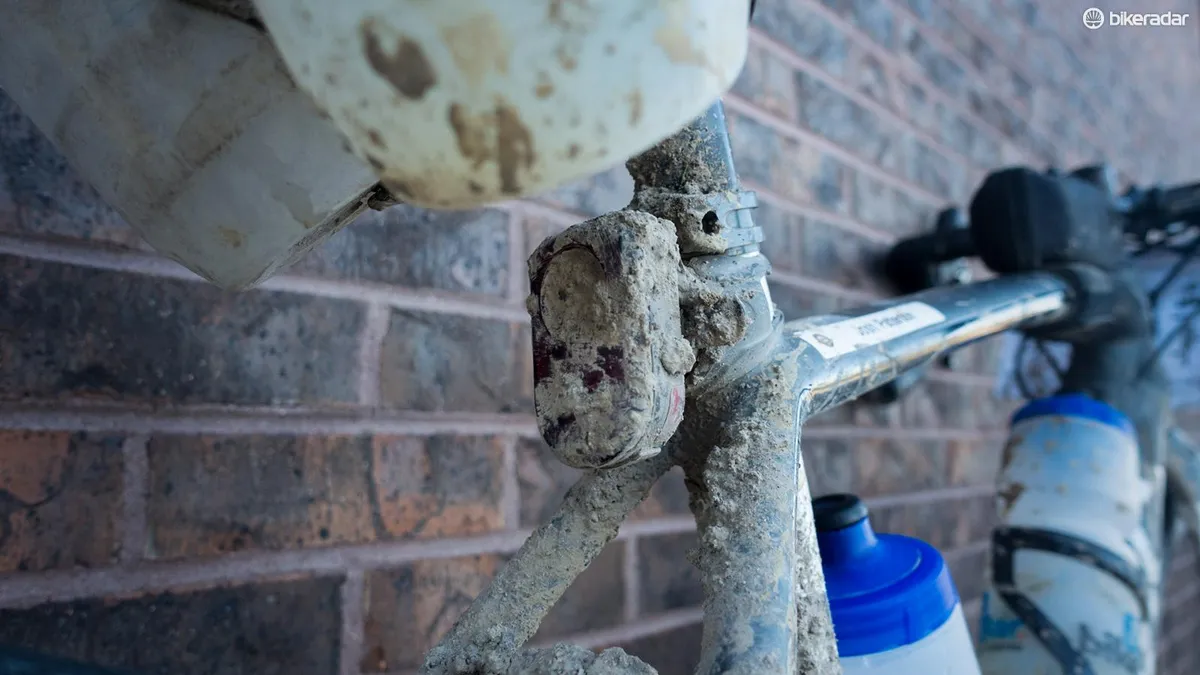
For navigation, I used Wahoo’s Elemnt. The turn-by-turn functionality wasn’t released until after the event, but the course was easy enough to follow on the screen. What I came to appreciate about the Elemnt is that the interface appears to have been designed for cyclists whose minds have been muddled by too many miles in the saddle. Everything is simple. It’s easy to see more or less data, or to switch between the navigation and data screens. I also appreciated the lack of a touchscreen. The buttons were easy to operate and kept mud and sweat off the display.
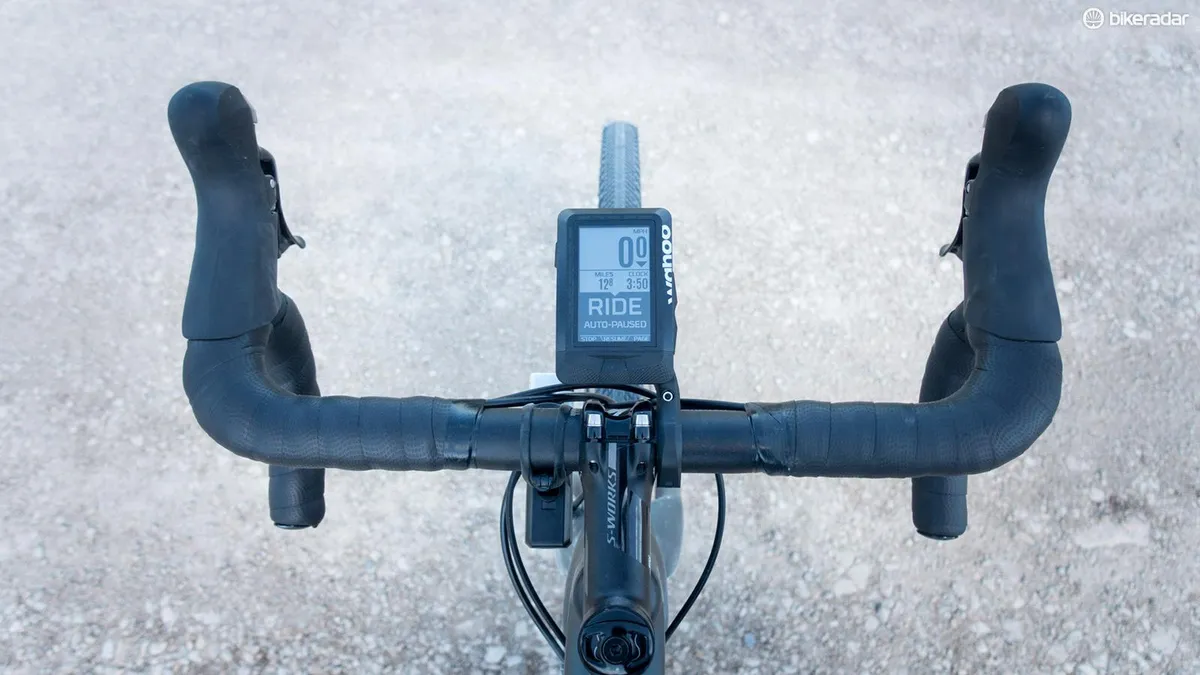
The battery lasted about 11 hours, tracking my route and heart rate, before it required additional juice from Goal Zero’s Flip 10 Recharger.
When the dust settled

I crossed the finish line after 14 hours and 23 minutes of racing. I wasn’t standing on the podium, but I met my goal of beating the sunset. Out of 944 starters I finished 60th. Considering my checkered track record, I call that a win.
The CruX and all my gravel accoutrements performed exceptionally well. So what will I change for next year’s race?
Not much, really. I might swap out the stock handlebar for one with more flare and find a different computer mount, preferably one that can also carry my front light, such as the Bar Fly 4.
Other than those nitpicks, I should probably log more miles before tackling the Dirty Kanza again.
